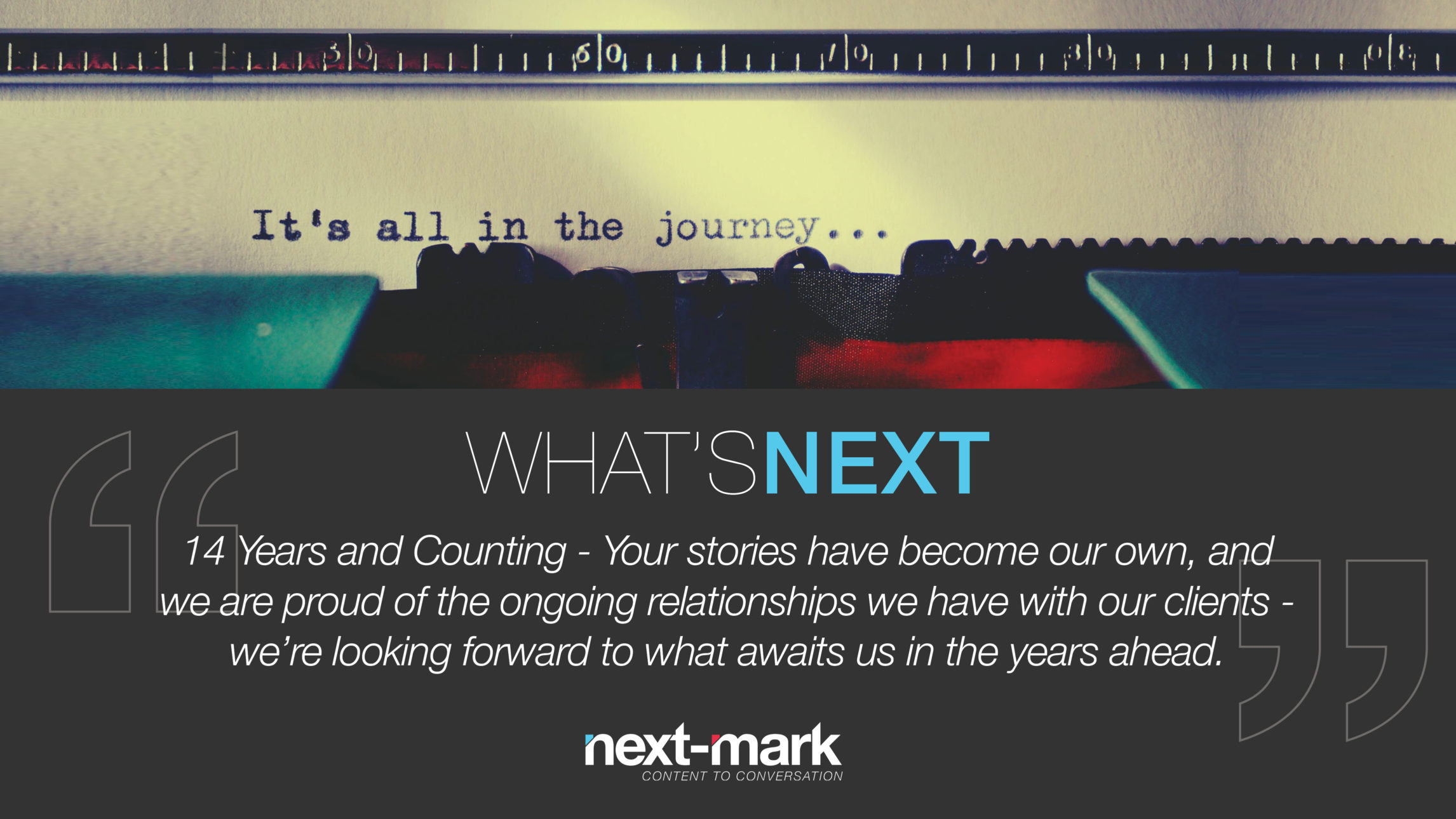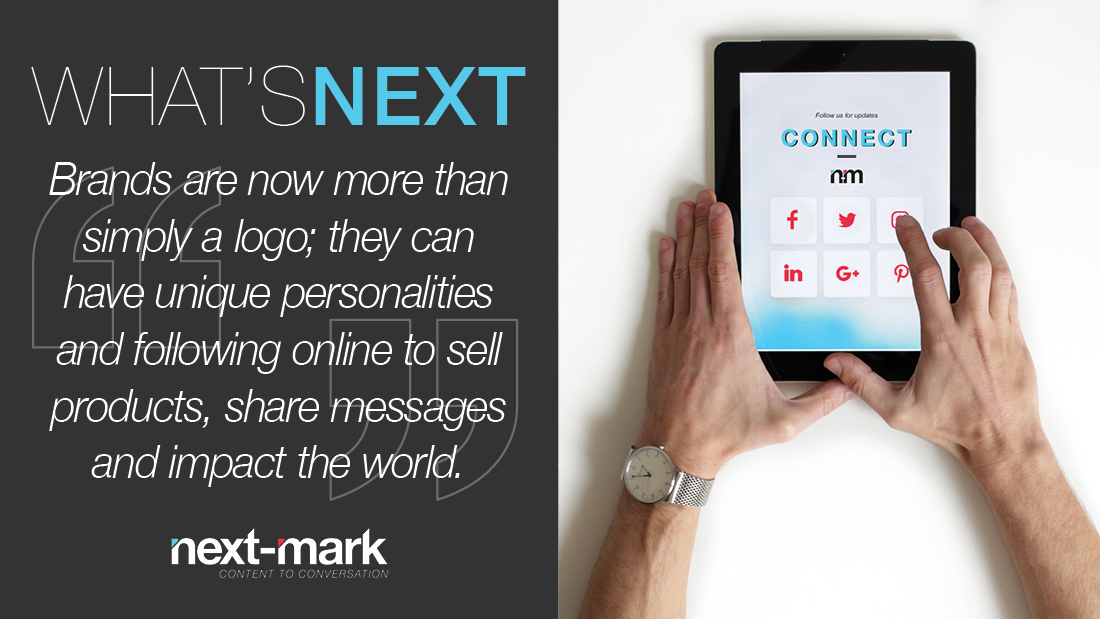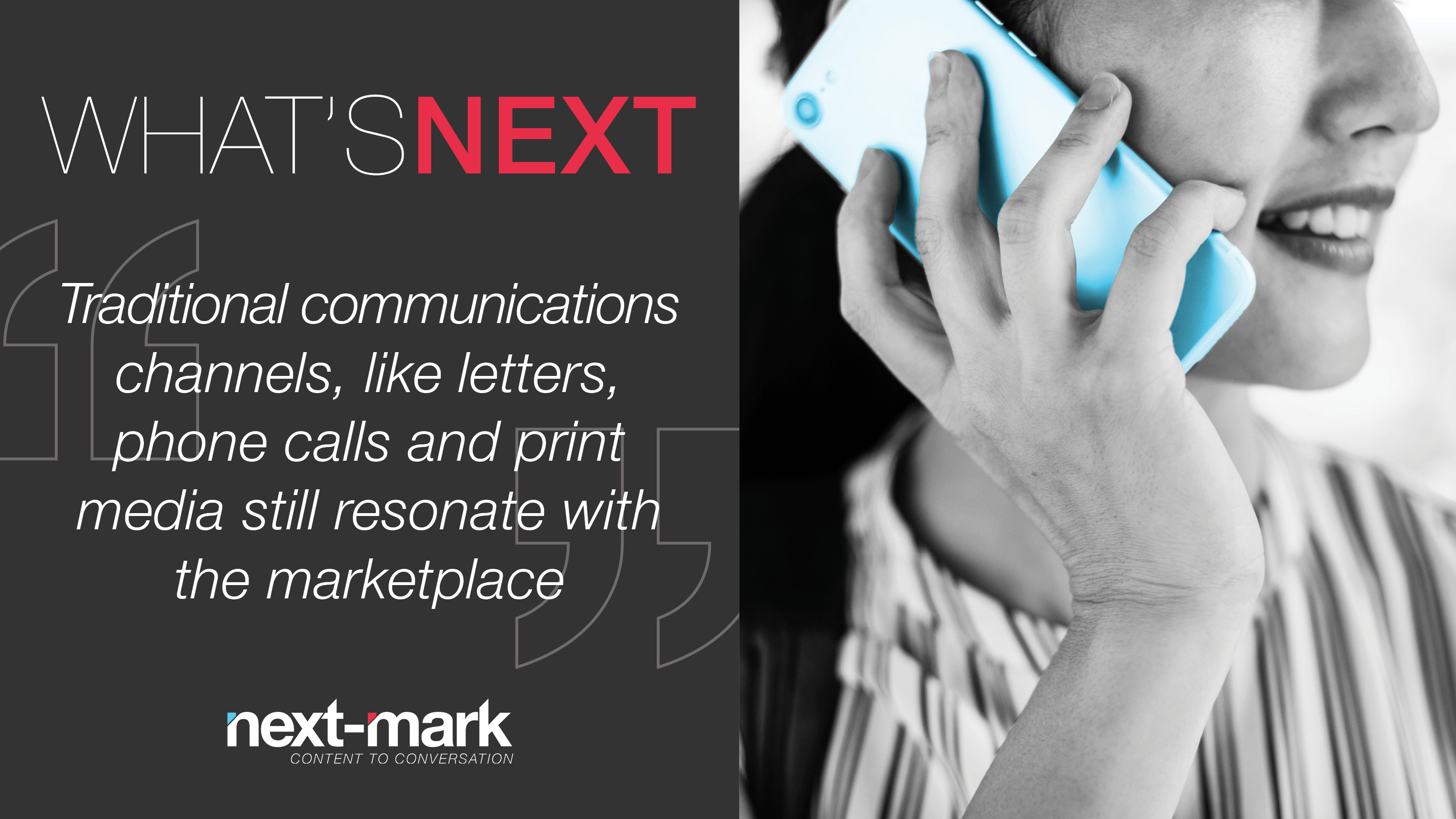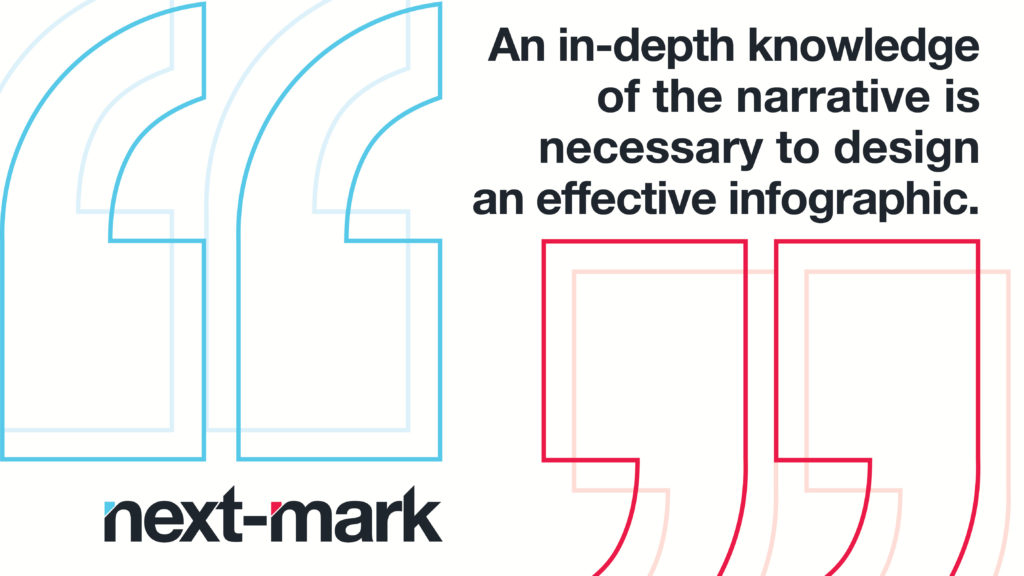
As we embark on our 15th year in business, it’s hard to believe the incredible journey we’ve been on – and how far it has taken us. I am incredibly grateful to our team members, our clients and the many others who supported Next-Mark as it has grown and evolved in this ever-evolving marketing environment.
It’s been an extraordinary experience, which literally has taken us around the world, from hosting clients from Sweden, to holding conference calls with clients in Dubai, to creating communications plans for Sarasota neighbors just a few miles down the road. From developing marketing strategies for international corporations to local sole proprietors, we have helped numerous companies create conversations about their brands and tell their stories. Their stories have become our own, and we are proud of the ongoing relationships we have with our clients and within our community.
While we’re excited to see what’s next, we know some things will remain steadfast, especially our core beliefs and values, which guide us to:
- Provide extraordinary service
- Collaborate with our clients
- Focus on truly understanding our clients’ needs and business objectives
- Be strategic in every aspect of our business
- Engage fully and be evolve as the marketing landscape changes
- Embrace the latest communications tools and technologies to fuel powerful marketing plans
- Translate our passion for what we do into impactful marketing outreach
Although we definitely are proud of what we’ve accomplished, we know we didn’t do it alone. Again, we are sincerely thankful for all who helped us get to where we are and excited to continue those relationships while building new ones.
We’re looking forward to what awaits us in the years ahead. If you would like to engage with us, let us know. We are ready and eager to help.


